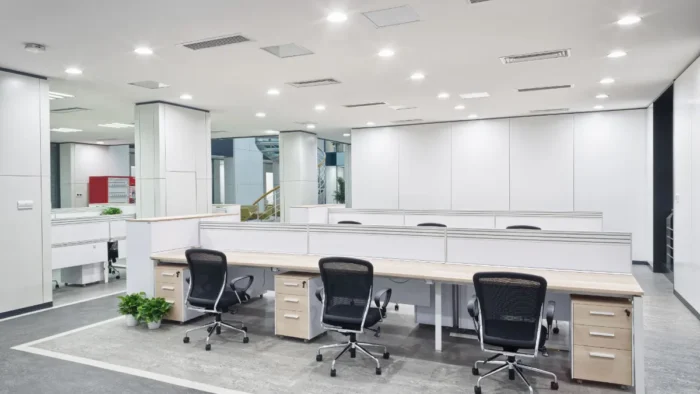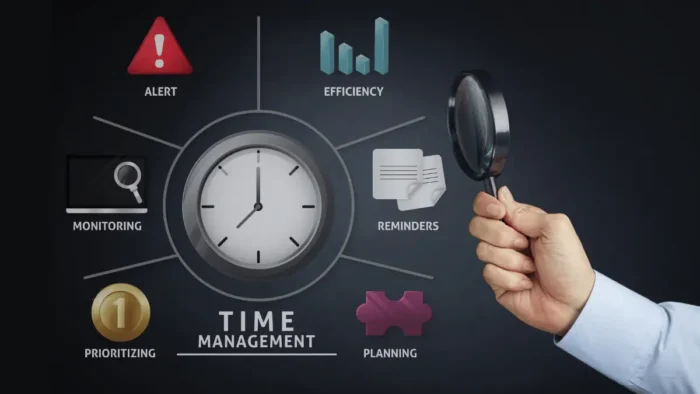In every workplace, productivity stands as the beacon of success. Many factors intertwine to form the intricate tapestry of efficiency, with one thread often overlooked—lighting. The impact of proper illumination on the performance and overall well-being of employees is substantial.
Here are seven essential tips to optimize workplace lighting to ensure your workspace radiates success.
1. Maximize Natural Light
Capitalizing on natural light is a savvy strategy to amplify productivity in the workplace. Sunlight, known for its mood-boosting properties, can invigorate employees, stimulate creativity, and foster a healthier working environment. Additionally, natural light decreases the dependency on artificial lighting, contributing to energy efficiency and environmental sustainability.
To optimize the inflow of natural light, engaging a professional window contractor in Silver Spring or your area is advisable. They possess the expertise to strategically position and install windows or skylights, ensuring maximum daylight penetration without compromising interior comfort or privacy. This investment enhances aesthetics and significantly boosts staff productivity and satisfaction. With the right window design and placement, offices can become brighter, more pleasant spaces where innovative ideas thrive.
2. Balance Ambient And Task Lighting
Harmonizing ambient and task lighting plays a vital role in fostering a productive work environment. Ambient lighting contributes to the workspace’s overall brightness, efficiently minimizing shadows and diffusing uniform light across the room, thus enhancing visibility. This form of illumination sets a comfortable background luminosity, creating an ideal setting for seamless work.
Conversely, task lighting serves a more concentrated function by spotlighting particular work areas such as desks or workstations. Doing so facilitates intricate tasks, mitigates eye fatigue, and aids in maintaining keen focus. Therefore, balancing ambient and task lighting can optimize productivity by offering a workspace that is well-lit and conducive to performance.
3. Consider Light Color Temperature
Considering light temperature can significantly influence the productivity of a workspace. Measured in Kelvins (K), the color temperature of lighting ranges from warm to cool. Light sources with a higher color temperature, exceeding 5000K, are known to stimulate alertness and productivity. This cooler, bluer light is ideal for areas that require high concentration, facilitating precision and efficiency in the execution of tasks.
Conversely, light with a lower color temperature, under 3000K, exudes a warm, yellowish glow that fosters relaxation. It’s perfect for low-stress areas and break rooms, aiding mental rest and rejuvenation.

4. Offer Adjustable Lighting
Adjustable lighting fixtures, such as a desk lamp with a dimmer or an office luminaire with color temperature control, enable workers to personalize their light levels. These smart lights provide both brightness and color temperature adjustments. With these features, employees can fine-tune their workspace lighting to meet their unique comfort levels and task demands, fostering a more productive and satisfying work environment.
5. Incorporate Indirect Lighting
Incorporating indirect lighting is a highly effective strategy for improving workplace productivity. Direct, harsh lighting can lead to discomfort and reduced efficiency, whereas indirect lighting softens the light distribution, minimizing glare and shadows. This strategy significantly minimizes eye strain, creating a more comfortable and visually pleasing environment.
6. Maintain And Clean Light Fixtures
Maintaining clean light fixtures is essential for maximizing productivity. Over time, dust and grime can accumulate on these fixtures, diminishing their effectiveness and altering the quality of both artificial and natural light. Regular cleaning sustains optimal lighting conditions, paving the way for an ideal work environment.
Below are some tips for maintaining and cleaning light fixtures:
- Conduct routine checks of all light fixtures for dust and dirt accumulation.
- Use appropriate cleaning materials for different types of fixtures to avoid damage.
- Clean windows and skylights regularly to ensure the unobstructed inflow of natural light.
- Regularly replace or repair malfunctioning lighting fixtures.
- Consider the use of low-maintenance light fixtures for ease and efficiency.
These steps will uphold the integrity and longevity of light fixtures, guaranteeing a consistently well-lit, conducive workspace that bolsters productivity.
7. Choose Energy-Efficient Lighting
Don’t overlook energy-efficient lighting options like LED lights when aiming to boost productivity. They provide superior light quality while reducing electricity costs and minimizing environmental impact.
Here are some critical tips for implementing energy-efficient lighting:
- Opt for LED lights over traditional bulbs for longevity and energy efficiency.
- Install automated light systems with sensors to turn off lights when rooms are unoccupied.
- Incorporate natural light through windows and skylights to reduce reliance on artificial light.
- Use energy-saving features such as dimmers or timers to regulate light usage.
- Invest in appliances and lighting fixtures with ENERGY STAR certification, a government-backed label assigned to products that meet specific energy efficiency standards.
These measures promote optimal illumination, productivity, sustainability, and cost-efficiency.
Conclusion
Effective lighting is a cornerstone of productivity. By following these seven tips, you can create an environment that fosters efficiency, improves employee well-being, and reduces costs. A brighter workplace indeed leads to brighter ideas.





